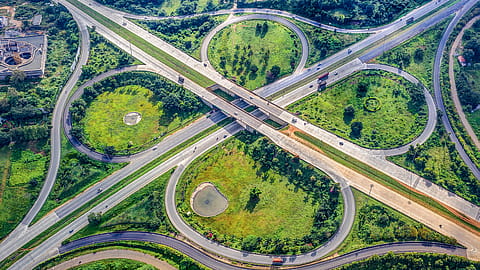The Brief: What Next After Capex Front-loading?
Despite the Centre's capital expenditure cycle gaining momentum, gross fixed capital formation — a proxy for investment — lags. It needs attention.

This story belongs to the Fortune India Magazine September 2023 issue.
MORNING SHOWS THE DAY, goes an old saying. Centre’s decision to front-load infrastructure spending has set the pace for economic growth in the latter part of the year. Finance ministry data shows ₹2.78 lakh crore capital expenditure in first quarter of FY24, up 59% from Q1 of FY23, out of the annual Budget allocation of ₹10 lakh crore. This is 27.8% of Budget estimate compared with 23.4% in same period of FY23 and four times the ₹63,000 crore spent in pre-Covid Q1 FY20.
The numbers were ₹88,273 crore in Q1 of FY21 and ₹1.11 lakh crore in Q1 of FY22.
Centre has been enhancing allocation to public infrastructure and front-loading capital expenditure as part of Covid macroeconomic management for pushing economic growth at a time when other engines of the economy — private capital expenditure, exports and private consumption — are performing below par.
“Central government has not only ramped up outlay but also the pace of allocation. It has expended 28% of the total budgetary outlay in first quarter, the highest in percentage terms in past five fiscals,” says a Crisil report. Pointing out that capital expenditure has grown at 30% CAGR between 2020 and 2023, it says, “Between FY20 and FY22, 18-20% Budget allocation was utilised in first quarter itself. Last fiscal, this reached 24%.”
Railway, Highway Lead
Ministry of Railways and Ministry of Road Transport And Highways, which got almost half the capital expenditure allocation at ₹4.98 lakh crore, are leading spenders. In first quarter, Ministry of Highways utilised ₹99,644 crore, 39% of ₹2.59 lakh crore allocated in Budget this year. Ministry of Railways spent ₹78,670 crore or 33% of its infrastructure allocation for the fiscal. “The two ministries collectively accounted for 41.6% of government’s total capex over FY20 to FY22. Both saw capex utilisation jump to 36% in first quarter compared with 12% in first quarter of FY20,” says Crisil.
Apart from these, one sector that has raised capex significantly is telecom. Out of total Budget allocation of ₹61,692 crore, Department of Telecommunications spent ₹26,985 crore, up from just ₹635 crore in first three months of FY23. Ministry of Housing and Urban Poverty Alleviation spent ₹5,227 crore out of annual allocation of ₹25,997 crore (20%).
More Stories from this Issue
Though capex utilisation is gathering pace, there are a few indicators to be cautious about — gross fixed capital formation (GFCF) and capital expenditure to GDP ratio. GFCF shows investment in the economy and is a proxy for future economic growth. Finance minister Nirmala Sitharaman said in her Budget speech that Budget FY24 will take capital expenditure to 3.3% of GDP. Though the share of capital expenditure in total expenditure has gone up from 13.73% in FY13 to 22.22% in FY24, GFCF, a key component of GDP, is lower as per cent of GDP than a decade ago — 33.9% in FY23, 34.1% in FY13. It is an indicator that even though capital expenditure has picked up, the economy is still catching up with the past. It will require government to continue the heavy lifting to ensure a holistic infrastructure facelift.